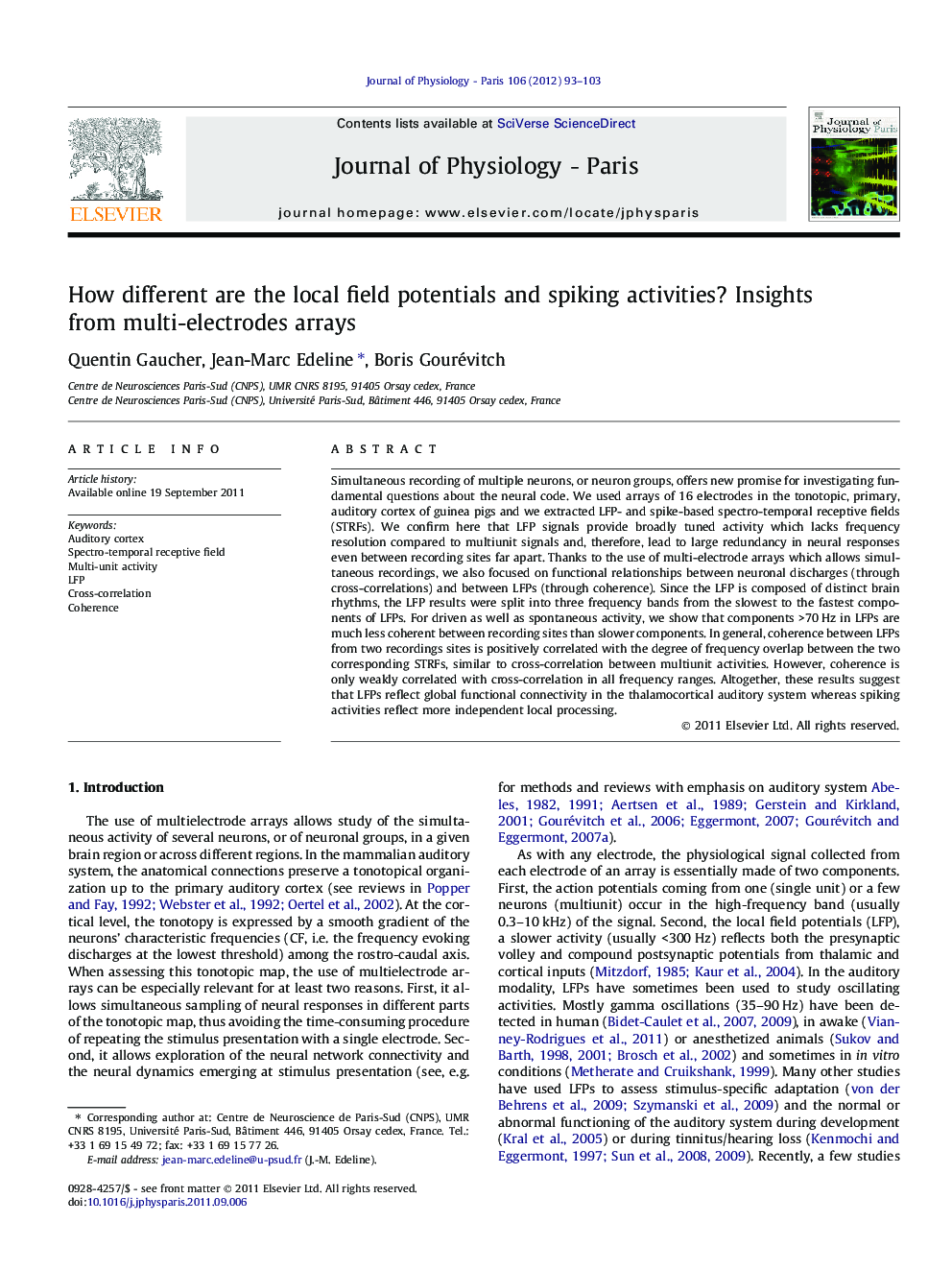| Article ID | Journal | Published Year | Pages | File Type |
|---|---|---|---|---|
| 2842327 | Journal of Physiology-Paris | 2012 | 11 Pages |
Simultaneous recording of multiple neurons, or neuron groups, offers new promise for investigating fundamental questions about the neural code. We used arrays of 16 electrodes in the tonotopic, primary, auditory cortex of guinea pigs and we extracted LFP- and spike-based spectro-temporal receptive fields (STRFs). We confirm here that LFP signals provide broadly tuned activity which lacks frequency resolution compared to multiunit signals and, therefore, lead to large redundancy in neural responses even between recording sites far apart. Thanks to the use of multi-electrode arrays which allows simultaneous recordings, we also focused on functional relationships between neuronal discharges (through cross-correlations) and between LFPs (through coherence). Since the LFP is composed of distinct brain rhythms, the LFP results were split into three frequency bands from the slowest to the fastest components of LFPs. For driven as well as spontaneous activity, we show that components >70 Hz in LFPs are much less coherent between recording sites than slower components. In general, coherence between LFPs from two recordings sites is positively correlated with the degree of frequency overlap between the two corresponding STRFs, similar to cross-correlation between multiunit activities. However, coherence is only weakly correlated with cross-correlation in all frequency ranges. Altogether, these results suggest that LFPs reflect global functional connectivity in the thalamocortical auditory system whereas spiking activities reflect more independent local processing.
► MUA and LFP activities were simultaneously recorded from primary auditory cortex. ► LFPs were more broadly tuned than MUA activities. ► For LFP, coherence is correlated with the frequency overlap between recordings. ► For MUA cross-correlation is correlated with the frequency overlap between recordings. ► Coherence between LFP is weakly correlated with cross-correlation between MUA.
